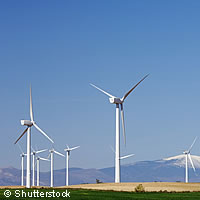EU wind power gathers speed
Widespread integration and use of wind power in Europe is set to become a reality. A major player pushing for a greener future is the EU-funded TWENTIES ('Transmission system operation with large penetration of wind and other renewable electricity sources in networks by means of innovative tools and integrated energy solutions') project, which will help pick up the pace of new wind power technologies across Europe. With a budget totalling EUR 56.8 million (over half of which was provided by the Energy Theme of the EU's Seventh Framework Programme), the project is one of Europe's largest industrial energy initiatives ever undertaken. The 26-partner consortium plans to remove the existing barriers and help us embrace the new era of electricity. Some of the world's leading transmission system operators (TSOs), generator companies, manufacturers and research organisations in the electricity sector have committed time and resources as partners of the TWENTIES project. Coordinated by Red Eléctrica de España, a TSO of the Spanish electricity system, the project partners will undertake full-scale demonstrations over the next three years to prove the benefits of the new technologies, the innovative approaches to the management of the electricity system, and the system services (such as voltage and frequency control). The aim is to find the right solutions to the current problems being faced by the industry in order to make way for the integration of more wind energy. The project is a pragmatic measure in response to EU and global targets in the battle against climate change and for greater security in energy supply. These targets include the EU's vision for 2020 (i.e. 20% reduction in CO2 emissions, 20% improvement in energy efficiency, and 20% share of consumption from renewable energy sources) and those outlined in the Strategic Energy Technology Plan (SET Plan), which seeks to accelerate cost-effective low carbon technologies. Under TWENTIES, various experiments, tests and demonstrations will take place across Europe. In Belgium and Spain, testing will take place on increasing the flexibility of transmission networks. In France, HVDC (high-voltage, direct current) meshed networks will be validated using simulations and experiments of two different HVDC circuit breaker technologies. In Denmark, the team will demonstrate two concepts and conditions: wind farms with flexible generation and loads using a scalable IT platform developed by a generator; and off-shore wind farm shutdowns under stormy conditions (using the world's largest off-shore wind farm). In the case of the latter, the effect that storms can have on energy production is difficult to predict. 'This could affect the stability of the grid causing it to be blacked out at worst unless the system is ready to handle these situations and can provide the lost production from elsewhere,' explained Poul Sørensen from Risø DTU National Laboratory for Sustainable Energy in Denmark. Risø DTU and Denmark's Energinet.dk along with other project partners, will demonstrate ways to cope with the reduction in energy production - so that it does not end abruptly and is easier to predict. Indeed, with several large wind farms scheduled for construction in the North Sea by 2020, it is critical that large wind farms have the capacity to withstand heavy storms. Work conducted as part of TWENTIES will be evaluated and documented in a report, due for release when the project concludes in 2013.
Countries
Denmark



